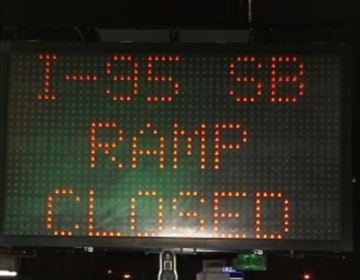Pennsylvania Independent: PennDOT Lands Could Be Worth Millions
Pennsylvania Independent: PennDOT Lands Could Be Worth Millions
When traveling along Interstate 80 in the western half of Pennsylvania, drivers could be riding directly above some of the state’s most lucrative land.
Leasing that land, which would allow drilling companies to extract natural gas from beneath state-owned highways, could mean millions of dollars for the state over the next twenty years.
“In the Marcellus area, a large portion of the private property has been leased on both sides of the road, but the gas companies cannot drill under the land owned by the state. Legally, the highway is an underground fence, and that property can be enormously profitable to the drillers if they are able to drill from the east side or the west side of the highway,” said Dr. Dennis Wydra, a retired professor who has spent the last three years researching the Marcellus Shale projects for the Unified Sportsmen of Pennsylvania.
The horizontal drilling well used for Marcellus Shale extraction can cost between three million dollars and $10 million each to construct, and without being granted permission to drill under the highways, companies that have leased land on both sides of state-owned roads will have to build separate drills on either side.
Each mile of Interstate highway in western Pennsylvania sits on a right-of-way forty feet wide, so a 100 foot stretch of highway covers 4,800 acres of land. The state could make more than $400 million in revenue through royalties over the next twenty years if that land is leased for drilling, according to Dr. Wydra. In addition, Pennsylvania would get upfront payments totaling more than $29 million in a “signing bonus”, typically a part of the leasing procedure followed by companies prospecting for natural gas.
The state has already leased nearly 700,000 acres of the public forests to companies interested in drilling the Marcellus shale to extract natural gas. The most recent bids, completed in January for a tract of land of approximately 32,000 acres, brought in more than $128 million, more than twice the original estimate.
The state will also receive an 18 percent royalty on all revenue from the extracted gas in wells drilled on state lands. Dr. Wydra’s estimate of $400 million over 20 years is based on a 15 percent royalty agreement.
The degree of interest in acquiring leases for those lands would vary from place to place, said Matt Pitzarella, a spokesman for Range Resources, one of the largest drilling companies working in the Marcellus region.
“In theory it’s an interesting concept, but because of the nature of where those roads are, it would be very difficult to accomplish,” said Mr. Pitzarella, who added that companies would only be interested in leasing mineral rights from PennDOT in selected areas where they were already leasing on both sides of the road.
The bids for such land would be considerably lower than Dr. Wydra’s estimations, in Mr. Pitzarella’s opinion.
“While it is a lot of land, it’s not in large contiguous pieces, and you would have to deal with ownership issues with the state and the federal government for the Interstates,” he said.
“Until you put it out for bid, you’re never going to know what kind of price you could get for it,” said Dr. Wydra.
PennDOT owns 39,861 linear miles of roadways in Pennsylvania, but a department spokesman said PennDOT has not been approached about leasing land for drilling, and the organization has not taken that idea under consideration. However, PennDOT does allow coal mining beneath state-owned roads in western Pennsylvania.
Dr. Wydra said he has received positive feedback from several members of the state assembly, including Rep. Sam Rohrer (R-Berks) and Rep. Matt Baker (R-Tioga). Neither representative returned calls for comment this week.
Natural gas is extracted from the shale through a process of “hydraulic fracturing”, by pumping a mixture of water, sand, and chemicals into the shale to create fissures to allow the gas to escape. More than 2,600 drilling permits have already been issued, and the state anticipates another 5,000 this year alone.
The Marcellus shale deposit stretches some 95,000 square miles from Central New York to West Virginia, and according to Department of energy estimates, could contain 262 trillion cubic feet of recoverable gas, making it the largest such deposit in the United States.
In 2008, the United States consumed 23 trillion cubic feet of natural gas.
WHYY is your source for fact-based, in-depth journalism and information. As a nonprofit organization, we rely on financial support from readers like you. Please give today.






